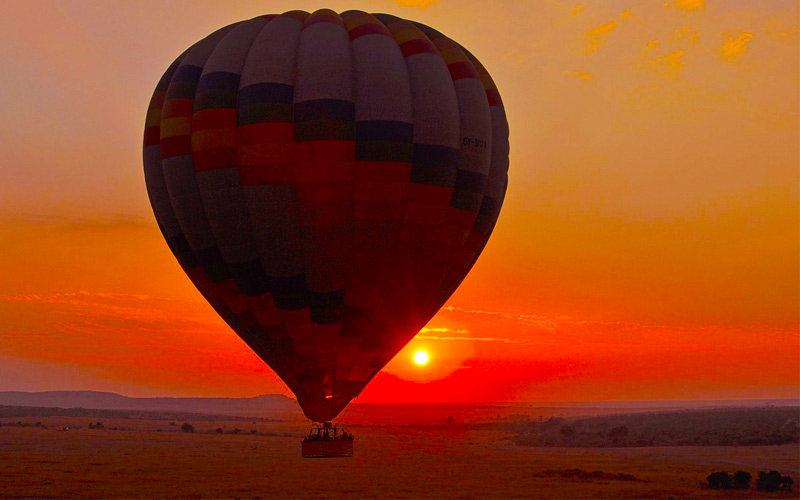Snug between Kilimanjaro and Mount Meru, Arusha National Park is one of the lesser-known safari destinations in Tanzania.
It boasts densely wooded forests and secluded lakes, offering wildlife safaris, iconic hiking trails and more.
The park’s landscape is dominated by the towering Mount Meru, a near-perfect volcanic cone with a deep and impressive crater.
Sheltered by the mountain is the Ngurdoto Crater, whose densely wooded slopes are home to a range of exotic forest birds and the extremely rare colobus monkeys.
Whenever I visit Kilimanjaro, I always make a point of descending into picturesque Arusha and basking in the rich environment, history and culture of this iconic wildlife park.
It may not harbour as much wildlife activity as the other northern parks, but what it lacks in animals it makes up for in breathtaking vistas and exhilarating hiking and outdoor opportunities.
In this article, I'll give you my best insights into Arusha's rich history, best times to visit Arusha, the costs of an Arusha safari, how to get to Arusha, budget and luxury accommodation in and around Arusha, the abundant wildlife in Arusha and other scenic spots you can explore around Arusha.
Let's get started!
My Quick Takeaways:
Considering a visit to Arusha National Park? Here's what you need to know at a glance:
- Scenic Diversity: The park boasts a range of landscapes, from the towering Mount Meru to the lush Ngurdoto Crater and the serene Momella Lakes.
- Wildlife Highlights: Home to giraffes, zebras, buffaloes, and primates like the rare colobus monkeys. While not a Big Five destination, the park offers unique wildlife viewing opportunities.
- Activities: Visitors can enjoy game drives, walking safaris, and canoeing on the Momella Lakes, providing diverse ways to experience the park's beauty.
- Best Time to Visit: The dry season from June to October is ideal for wildlife viewing, as animals gather around water sources and vegetation is less dense.
- Accessibility: Located just 32 km east of Arusha town, the park is easily accessible and often serves as a starting point for Northern Circuit safaris.
Ready for a full breakdown of what to do and see in Arusha National Park? Let's go!
Which tour? Here are 5 Arusha safari tours I highly recommend:
- Arusha National Park Day Safari (1 day)
- Budget Big Five Safari (incl. Arusha) (4 days)
- 5 Days of Tanzania Safari (5 days)
- Northern Tanzania Camping Safari (7 days)
- Serengeti Trail (incl. Arusha) (8 days)
See more Arusha safari deals.
Arusha National Park FAQs
Before we descend into the Arusha National Park FAQs, why not try orienting yourself first with my dynamic map of Tanzania below?
As you'll see, Arusha forms part of Tanzania’s Northern Circuit national parks consisting of the Ngorongoro Crater, Lake Manyara, Tarangire and the Serengeti.
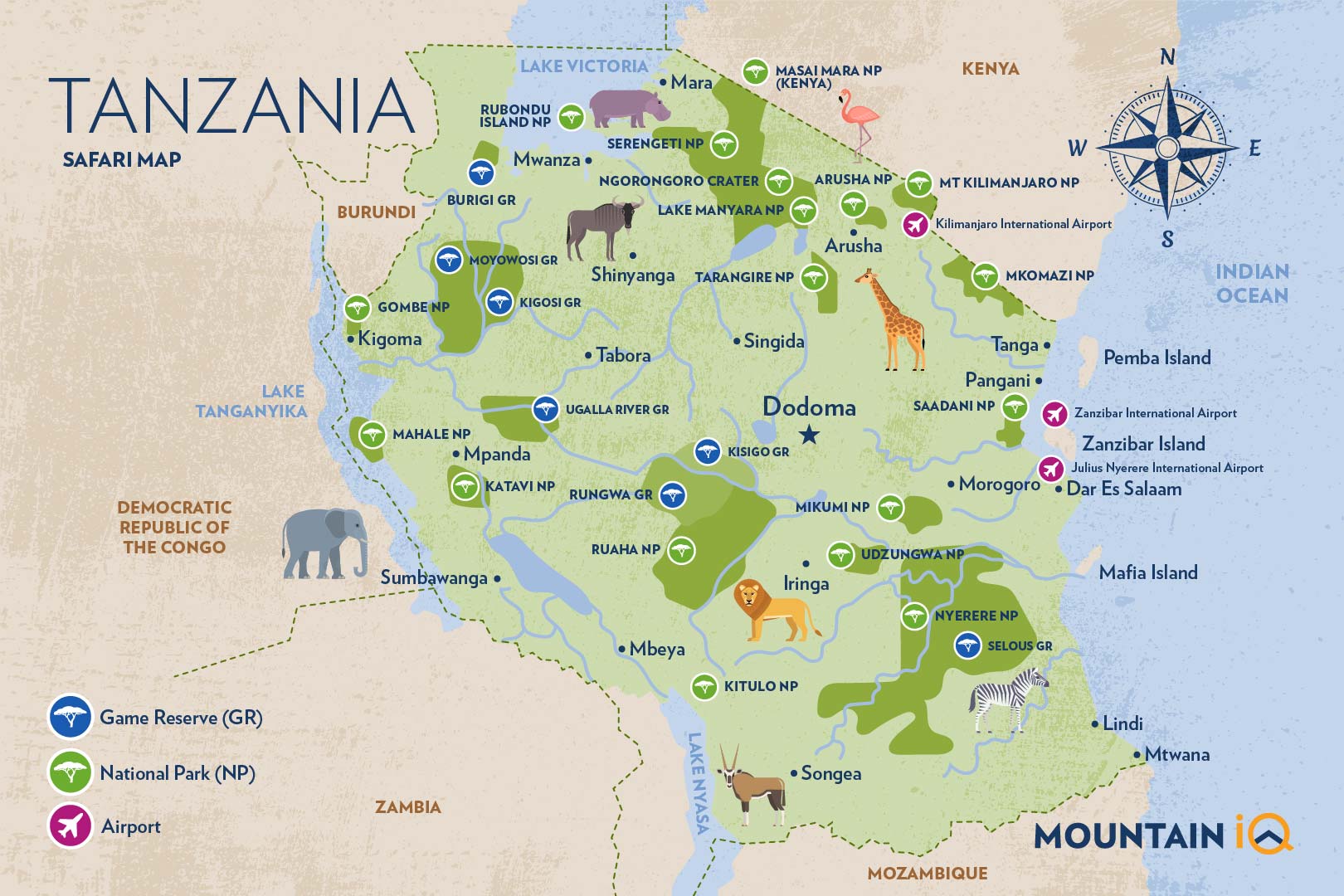
Arusha National Park is part of the Northern Circuit and offers a unique wildlife safari experience for visitors.
Why is Arusha called 'The Geneva of Africa'?
The town of Arusha is called 'The Geneva of Africa' because it is the launchpad for safari-goers visiting Tanzania.
The bustling metropolis of Arusha is one of the fastest-growing cities in Tanzania and the epitome of African urban living. Arusha is in stark contrast to the untamed natural wilderness beyond the city’s borders.
Arusha is also close to other iconic destinations, such as Ngorongoro, Serengeti and Karatu, which are at most a two-hour journey from the town. Arusha National Park lies 32km east of the eponymous town and covers only 552 square kilometres.
Even if you don't end up doing a safari tour, visiting illustrious Arusha will be an unforgettable experience.
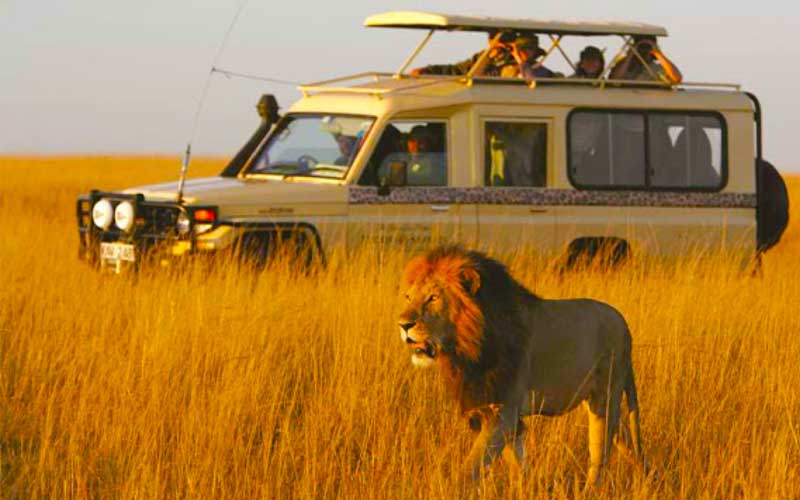
Plan your Safari experience
Check out these amazing deals on epic safari experiences now.
When is the best time to visit Arusha National Park?
Dry Season (June-October):
The best time to visit Arusha National Park is during the dry season between June and October. The vegetation is thinner and water is scarcer, which makes it easier to spot animals.
Another perk is fewer mosquitoes is the dry months and ultimately a reduced chance of catching malaria.
Arusha enjoys a temperate climate due to its proximity to the base of Mount Meru and its altitude of about 1300m.
The Park is generally lush and green all year round and is comprised of a large forest section, even the rainy season can make for successful safaris.
Learn more about when to travel to Tanzania.
Wet season (November-May):
There are two rainy seasons in Arusha National Park. The season of ‘short rains’ is between November and December with sporadic showers generally clearing up quite quickly.
The wet season of March to May brings long, rainy days and outdoor activities and safaris offer slim pickings. Most lodges also close their doors during this season.
My Pro Tip: The scenery is most spectacular during the wet season and many lodges offer low-season rates, which make the accommodation more affordable.
How much does an Arusha National Park safari cost?
Arusha safaris cost about $300 per person for a budget Tanzania safari to $950 per person for a luxury Tanzania safari.
Tourists also have the option of selecting a Tanzania camping safari for their visits to Arusha National Park. It is relatively small, so most tourists usually spend 1-2 days in this national park.
Also, tours are often combined with other popular tourist destinations in the area like Mount Meru, Mount Kilimanjaro, and the other Northern Circuit national parks (Serengeti, Tarangire, Lake Manyara and Ngorongoro).
Which tour? Here are 5 Arusha safari tours I highly recommend:
- Arusha National Park Day Safari (1 day)
- Budget Big Five Safari (incl. Arusha) (4 days)
- 5 Days of Tanzania Safari (5 days)
- Northern Tanzania Camping Safari (7 days)
- Serengeti Trail (incl. Arusha) (8 days)
See more Arusha safari deals.
Arusha is a spectacular safari park waiting to be discovered. Safaris along the plains offer up sightings of Cape buffalo, various antelope and the occasional elephant, rhino, and leopard – if you’re lucky!
Adding to the park’s allure is the opportunity to experience mountain biking, canoeing and walking safaris.
See more on the average cost of safaris in Tanzania and the best Tanzania safari tour operators. Also see more on which safari holidays in Tanzania suit you best and how to prepare for your next great adventure.
How do I get to Arusha National Park?
The best way to get to Arusha National Park is to fly to Kilimanjaro International Airport (60km east of Arusha), the main port of entry for visitors entering northern Tanzania.
From the airport, it is a quick bus ride into Arusha town or directly to the park.
Alternatively, there is a small domestic airport in the west of Arusha itself which tourists can use for their travels.

Plan your Safari experience
Check out these amazing deals on epic safari experiences now.
What accommodation is there in or near Arusha National Park?
There are lots of accommodation options in and near Arusha National Park.
Africa’s ‘Safari Capital’ is home to some of the best hotels and lodges in Tanzania.
With Arusha National Park being so close it makes sense for most park visitors to stay in the town rather than in the Park where accommodation is scarce.
Where to stay? Here are 5 of my favourite accommodation options close to Arusha National Park:
- Four Points by Sheraton (The Arusha Hotel)
- Africa Lodge (Arusha)
- Mount Meru Hotel
- Elewana Arusha Coffee Lodge
- Lake Duluti Lodge
See more Arusha accommodation options.
The most famous of the city’s lodgings is the Arusha Hotel. Frequently visited by John Wayne in the 1960s during the shooting of ‘Hatari’, guests will feel like they have been transported back in time when they visit the hotel’s famous bar.
Mount Meru Game Lodge and Wildlife Sanctuary is a retreat for discerning admirers of wildlife and nature.
The sanctuary was created as a home for injured and orphaned animals, and the lodge provides a magnificent backdrop to the surrounding wildlife.
Other lodges set around the town of Arusha offering unique and memorable stays include Arusha Coffee Lodge, Arusha Safari Lodge, Kigongoni Lodge and Lake Duluti Serena Hotel.
Africa Safari Lake Natron offers camping and caravan options just outside the park and has exquisite semi-permanent tents.
Hatari Lodge is one of just a handful of lodges inside the National Park’s perimeters. This classy establishment offers nine rooms situated in the acacia woodland.
Views of Mount Meru can be enjoyed from the terraces of the main building. Guests can also enjoy highly professional game drives and walks.
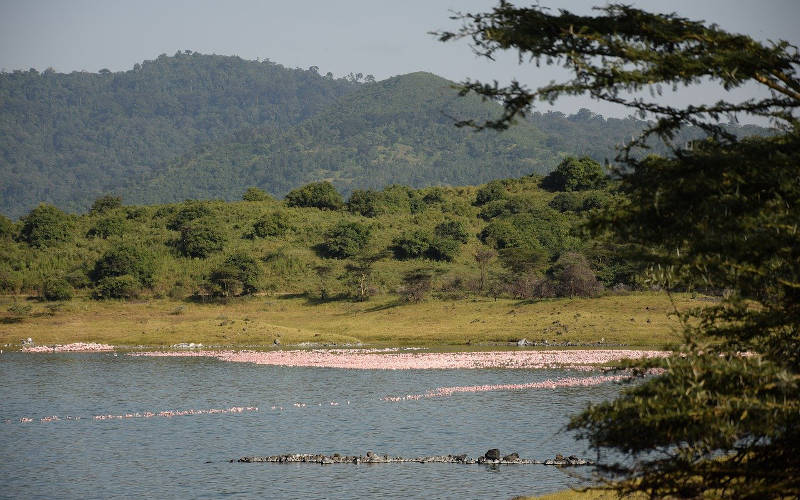
Arusha National Park Walking Safari
Check out this awesome day tour from my recommended local partner
What other scenic spots can I visit near Arusha National Park?
Lucky for you, there are many scenic spots you can visit that are close to Arusha National Park.
If safaris aren't your thing, you can always try out excellent hiking trails through the park and head out towards Mount Meru and do some birdwatching at the Momella Lakes.
Mount Meru
Mount Meru tops out at 4556m, making it the fifth-highest peak in Africa and second highest in Tanzania.
Being so closely located to Mount Kilimanjaro it can be an excellent choice for climbers trying to acclimatise before attempting one of the world’s Seven Summits.
The first ascent of Mount Meru is still a hotly contested topic and is widely thought to have been undertaken and achieved by either Carl Uhlig in 1901 or Fritz Jaeger in 1904.
It is not to be confused with Mount Meru in the Himalayas, which was the site of the 2015 movie ‘Meru’.
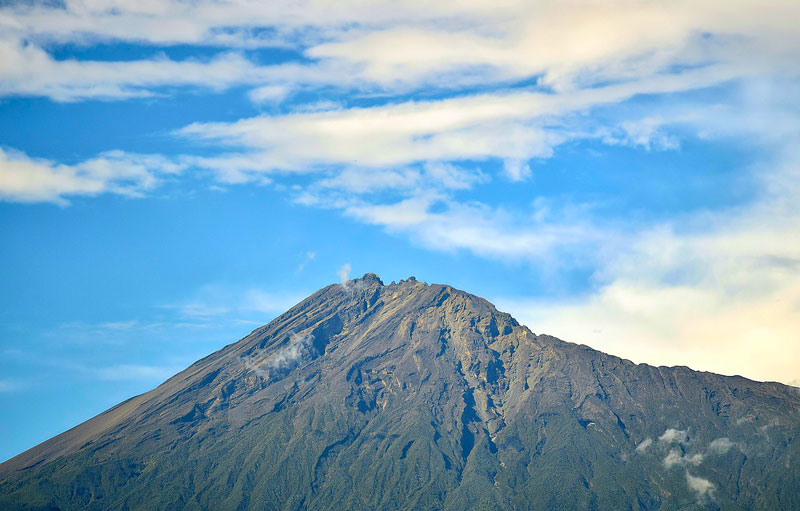
Here are a few important things to note about Mount Meru:
- Its formation
- The route
- Challenges of the climb
Adding to the mountain’s allure is the fact that it is still an active volcano. The mountain burst into life with its first explosion around 500,000 years ago.
That explosion blew apart half of the mountain and the eastern rim was shattered. This left behind the distinctive 5 km wide breached caldera.
The most recent eruption was in 1910 but it now stands dormant.
An additional summit, Ash Cone, was formed during the eruption in 1910 and is worth exploring.
After drinking in the unparalleled views at the summit, most hikers will make their way all the way back down to the Meriakamba Hut or right back to the gate.

There is only one route up the mountain – the Momella Route.
Starting at the Momella Gate, the first portion of the hike passes through plains and forests filled with waterfalls and wildlife. There are two huts along the route up to the summit:
- Meriakamba Hut is roughly a five to six hour walk from the gate and is an ideal place to spend the first night on the mountain.
- Saddle Hut is the second hut and is normally used for lodgings on the second night.
On the final day of the hike, climbers will negotiate their way past Rhino and Cobra Point, relishing views of the Tanzanian highlands as the rising sun gently illuminates the plains below.
The last part of the hike traverses the narrow crater rim path – an exhilarating section, especially when the summit is capped in snow.
The view from the summit is breathtaking with a 1500m drop down a sheer cliff to the crater floor on one side, and the vast plains of Tanzania stretching out on the other.
Meru is a challenging climb in its own right and although no technical climbing gear is needed, it is high enough to bring upon the effects of altitude sickness.
Most journeys to the summit take three to four days with a guide and usually porters. An armed ranger accompanies hiking parties through the entire expedition to alleviate the threat of wild animal attacks.

Plan your Safari experience
Check out these amazing deals on epic safari experiences now.
Momella Lakes
Momella Lakes offer an enjoyable change of pace to the usually dry and arid Tanzanian landscape.
The tranquil waters can be explored with canoe while taking in the stunning views of Mt Kilimanjaro 70km to the west, with its snow-capped peak.
The forest trails in the Ngurduto Crater offer 50 kilometres of footpaths winding their way through the belly of the jungle.
The beautiful network of trails leads hikers to the top of the crater rim where the panoramic views of the forest and plains below are simply spectacular.
Which tour? Here are 5 Serengeti safari tours I highly recommend:
- Group Camping Safari that includes Tarangire and Ngorongoro (4 days)
- Budget Serengeti Safari (5 days)
- Scenic Northern Tanzania Safari (7 days)
- Serengeti Trail that includes Ngorongoro (8 days)
- Best of Kenya and Tanzania (incl. 6 national parks) (12 days)
See more Serengeti safari deals.
What animals can I see in Arusha National Park?
Despite being relatively small, you can still see animals in and around Arusha National Park. Of these animals, monkeys and flamingos are notable features of this unique African habitat.
Monkey Population in Arusha National Park
A highlight of the park for many is the chance to spot the black and white colobus monkeys performing their acrobatics high up in the canopies that decorate the Ngurduto crater’s edge.
Walk through the forest and listen as the eerie calls of the monkeys reverberate through the trees.
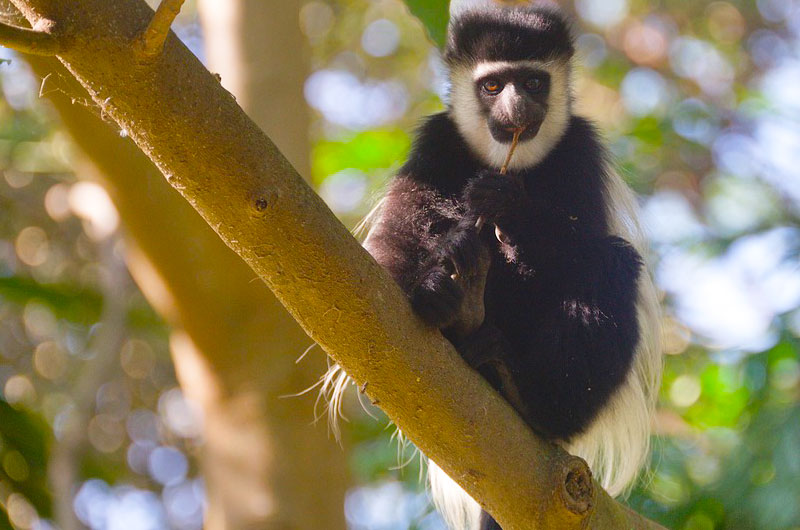
Colombus monkey
Blue monkeys or diademed monkeys have also prized sightings in Arusha. Part of the ‘old world monkeys’ family, these natives of central and east Africa are a rare find.
Pink Flamingos in Momella Lakes
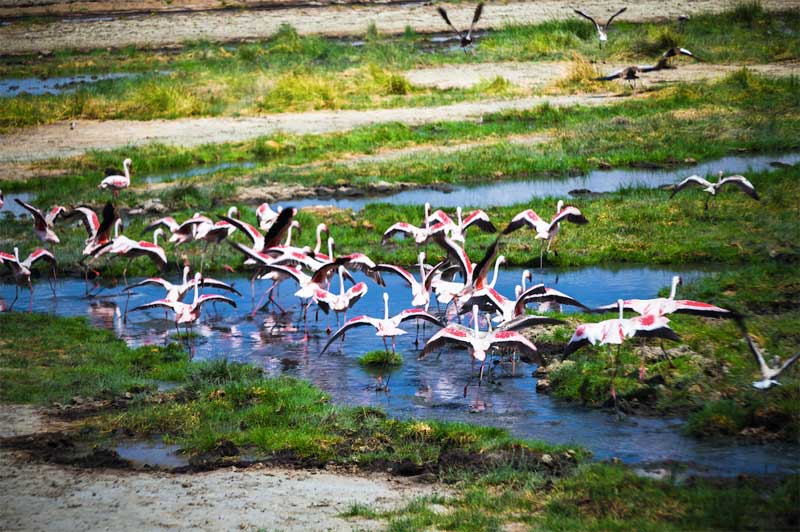
Momella Lakes is special because of its unique aquatic wildlife and habitats as well as its diverse footpaths for hiking through picturesque forests to the Ngurduto Crater.
A variety of water birds – the majestic pink colonies of flamingoes being a particular favourite - can be found in the forest areas.

Plan your Safari experience
Check out these amazing deals on epic safari experiences now.
My Final Thoughts
And there you have it: Everything you need to know about Arusha National Park. Will I visit again? Certainly! What about you? Let me know in the comments below.

